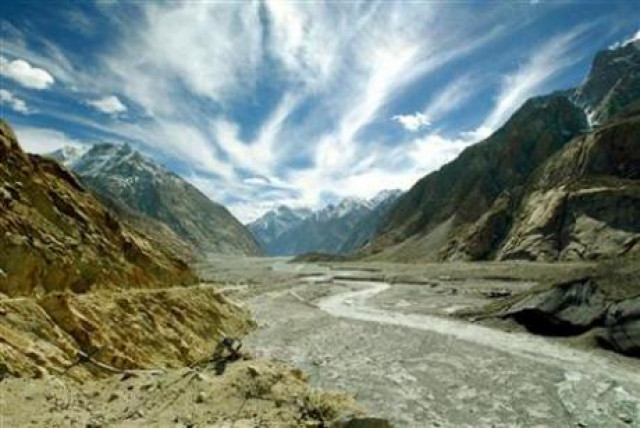
This was stated by Prof M. Iqbal Khan, the only Pakistani glaciologist, who visited Antarctica, while talking to APP on Sunday.
He remarked that the pace of melting glaciers in Pakistan is faster than any other country and only rains could not be held responsible for the floods.
"It is the glaciers which are adding fuel to the fire and due to the melting of glaciers the flood situation is aggravated," he added.
Giving details of the glaciers in the country, he said there are a total of 202 dominant glaciers which contain huge quantity of water.
He described glaciers as "frozen water resources" which are melting at a fast pace, as the recent decade has experienced exceptional environmental changes throughout the world because of global warming.
He added that there was never a melting process at 18,000 ft but now this level has reached 20,000 ft which is very alarming as it can deplete our frozen water reservoirs rapidly. Khan stated that over 50 per cent of frozen water resources have been lost and warned that there would be severe water scarcity in coming years.
About the recent rain spell in the country, Professor Iqbal said the pattern of rainfall has also changed which added to the situation.
He said earlier, the route of the monsoon rains used to start from the Bay of Bengal and then it routed through Lucknow, Delhi, Shimla, Northern Areas, Chitral, Peshawar and other parts of the country.
He added that the recent rains have changed their route and shifted towards South to Urisa, Maharashtar, Rajputana, southern Punjab, eastern Balochistan and Sindh and as the system was strong it reached the mountainous areas of Pakistan too.
He termed the climate change and global warming as the main reasons for the floods and said there is need to work on Hazard Mapping.
Prof Iqbal Khan informed that he is currently working on his second book "The upcoming natural disasters in Pakistan" in which he will tell about different natural calamities.
He has asked National Disaster Management Authority to focus on his recommendations as he is the only authentic person in the field of glaciers.


















COMMENTS
Comments are moderated and generally will be posted if they are on-topic and not abusive.
For more information, please see our Comments FAQ